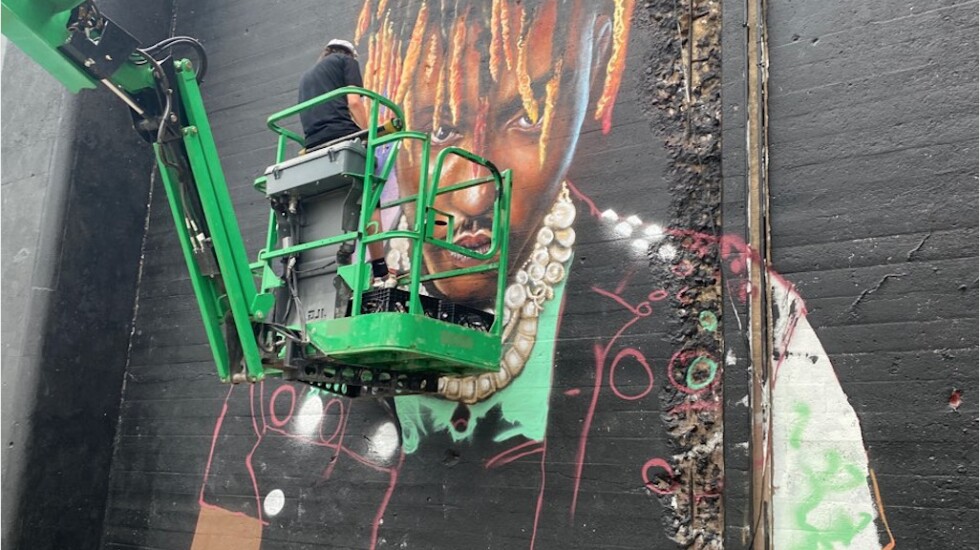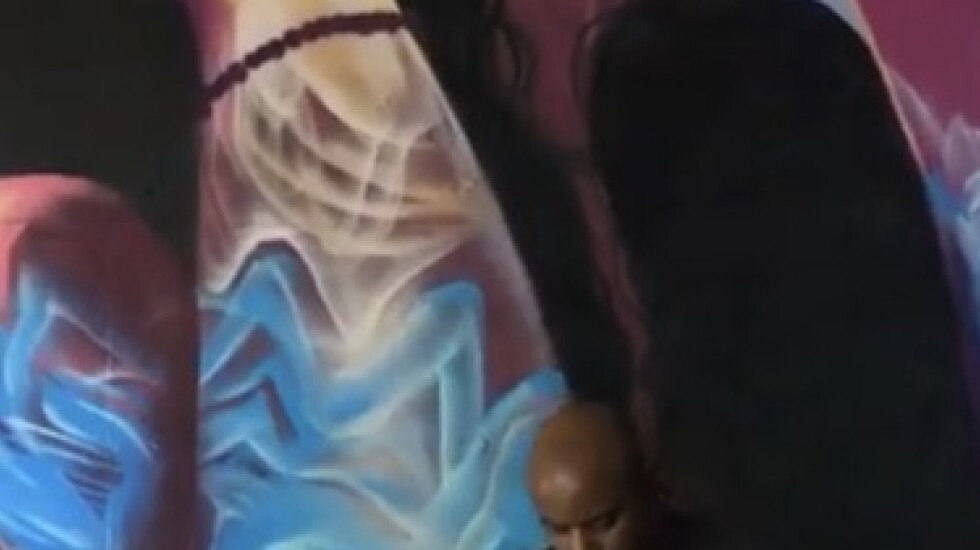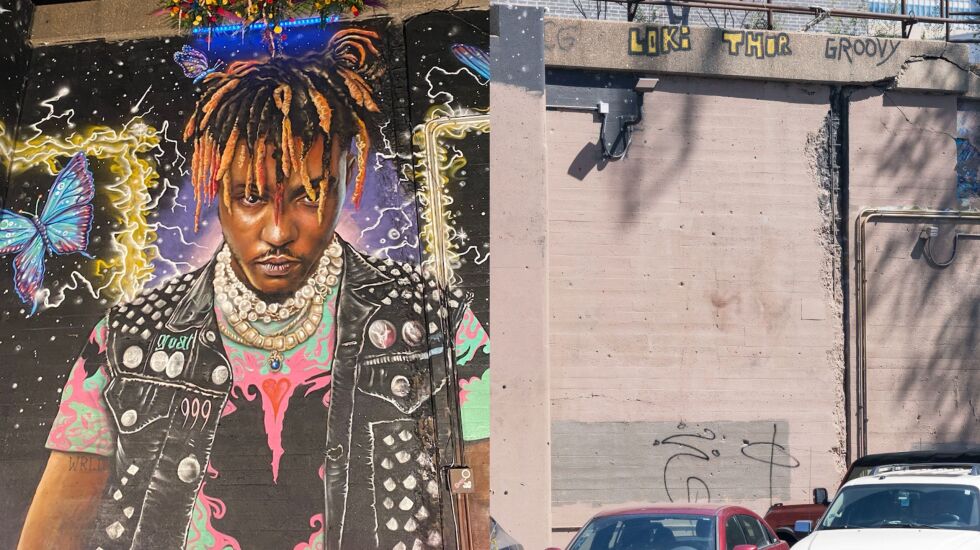
The Juice WRLD mural that became a shrine for the late Chicago rapper was mysteriously painted over in the West Loop last week.
No one has claimed responsibility for erasing the mural, along with one that depicted the late Chicago DJ Frankie Knuckles.
But the artistic director who oversees the murals called it a deliberate, organized effort.
Neighbors had long complained about the visitors who came to see the Juice WRLD mural, which had gone viral on social media and attracted international tourists.
“In the realm of public artwork and murals, that’s the pinnacle of success,” said Levar Hoard, managing director of B_Line. The group oversees more than 200 murals along the Hubbard Street corridor that he calls a “cultural landmark.” Some murals date back to the 1970s, he said.

Hoard had asked the city to help protect the famous mural with fences and security, but he said those requests fell on deaf ears. “When you have a piece of art that has the power to do that, (to draw people from across the globe), it’s special,” he said.
The murals near Green and Kinzie streets were painted over with brown paint. Two other murals, one depicting late artist MF Doom and another of a female DJ by artist Caesar Perez, were also erased, Hoard said.
The city’s Department of Streets and Sanitation, which erases graffiti, denied painting over the murals.
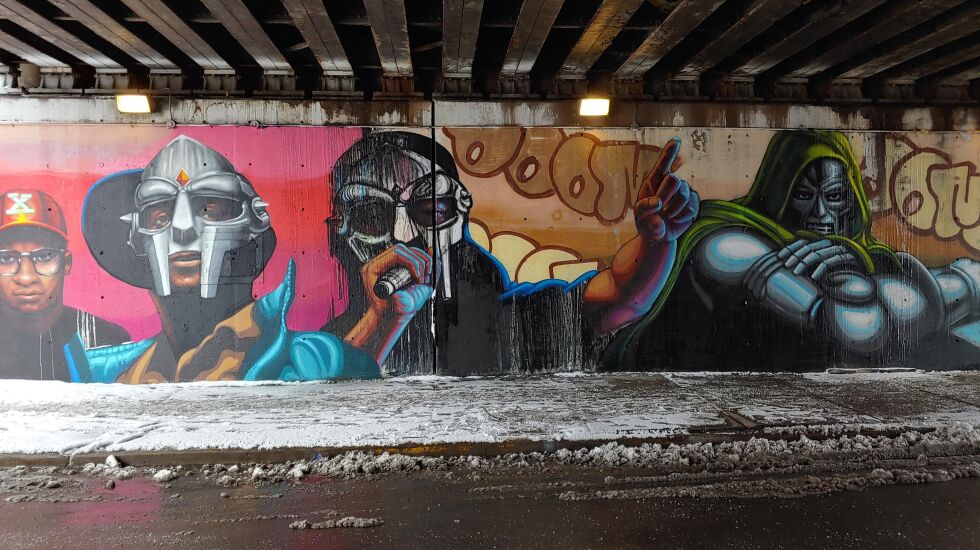
To prove it had not, the department sent crews Tuesday to layer a sample of the brown paint they use to show it was a different shade, but Hoard said that paint matched the color used in the other half of the erase job.
The new paint job was also done with rollers, but the city always uses sprays, a Streets and Sanitation spokesperson said.
The last 311 graffiti removal requests for that location was last May, and city crews usually respond in three to five days, the department said.
Metra, which runs trains nearby, and Union Pacific, which owns the viaduct, have both denied painting over the murals.
Bill Sommerfield, owner of Mid City Parking, which owns a parking lot in front of the murals, did not reply to requests for comment.
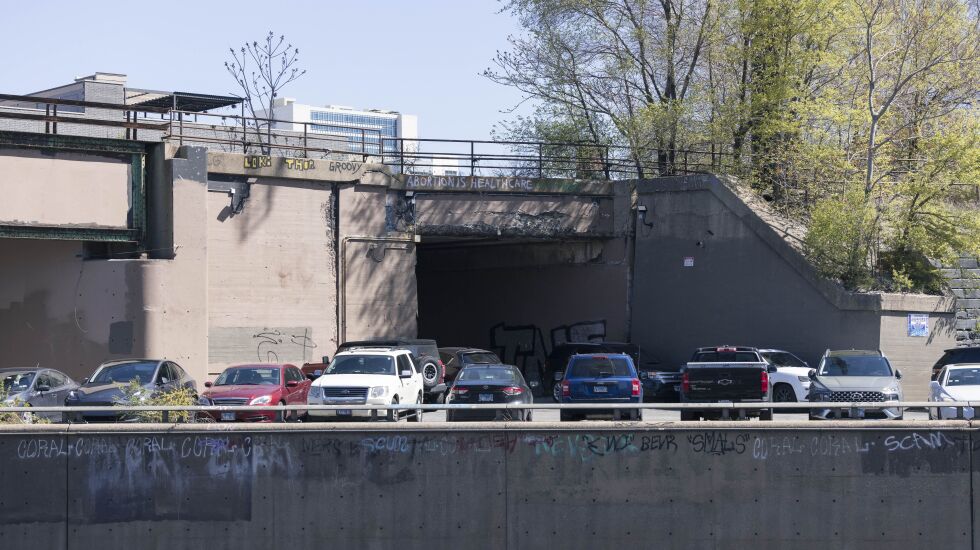
The Juice WRLD mural was painted in 2020 by Connecticut-based artist Corey Pane, who also designed the cover of Juice’s posthumous album, “Legends Never Die,” which was released at the same time as the mural was finished.
Juice WRLD was born in Chicago as Jarad Anthony Higgins. He died of an accidental drug overdose upon landing at Midway Airport in 2019.
Pane said the mural of Juice WRLD had become a “landmark” in Chicago.
The mural contained symbolism in its butterflies and shooting stars, which represented Juice’s flourishing but brief career, Pane said.
“People came from everywhere to see it. When people talk about Chicago, they talk about that mural,” Pane said. “The mural is bigger than Juice WRLD and me the artist. It’s about the spirt and energy it brings to the people who see it.”

To protect the murals, Hoard said he had several conversations with neighbors and Ald. Walter Burnett Jr. (27th), and shared a plan to build fencing and provide security. But he says the city declined to implement the proposal.
Burnett declined to comment, saying, “There’s no win with that thing.”
But he told Block Club Chicago, which first broke news of the paint job, he doesn’t know who painted over the murals. Burnett said he was part of discussions with the community about the murals, but there was no consensus to remove them.
Hoard, the mural director, said the neighborhood largely supports the murals and the people it attracts, expect for a few vocal detractors who live nearby.
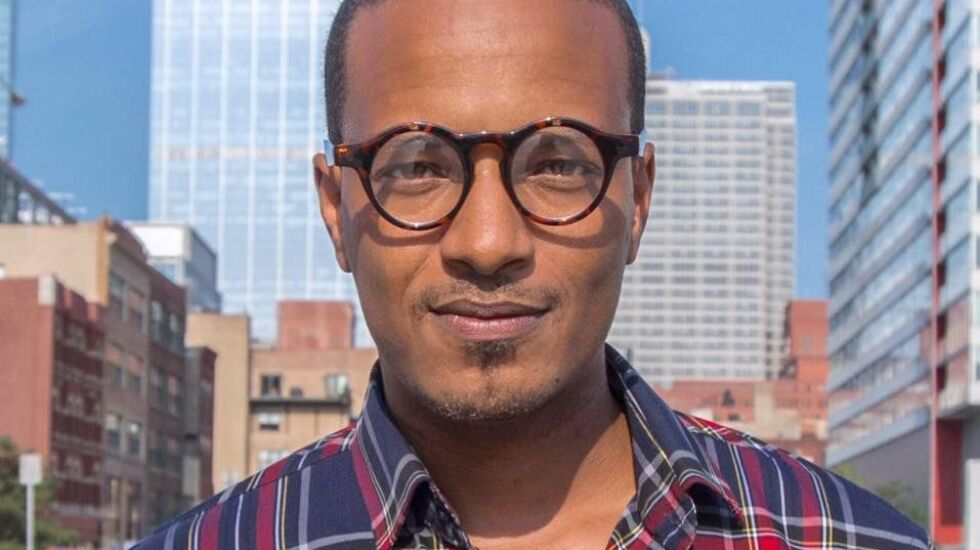
Hoard, who lives in the West Loop, also suspects racism is behind the resistance.
“This particular block has seen four (murals) of African Americans with paint thrown over their faces,” he said.
When Juice WRLD mural was finished, the mural went viral on social media and attracted thousands, including some rowdy loitering, but it has calmed down since then, he said.
After leaving dinner in Fulton Market one evening, Levar came upon several hundred people partying outside near the Juice WRLD mural. He pushed his way through the crowd, unplugged the DJ’s decks and told everyone to leave.
“It was very dramatic,” Hoard said. “But that’s the old story. It’s been calm since then.”
But the crowds attracted to the murals show just how successful they have been, and they should have been protected better, Hoard said.
